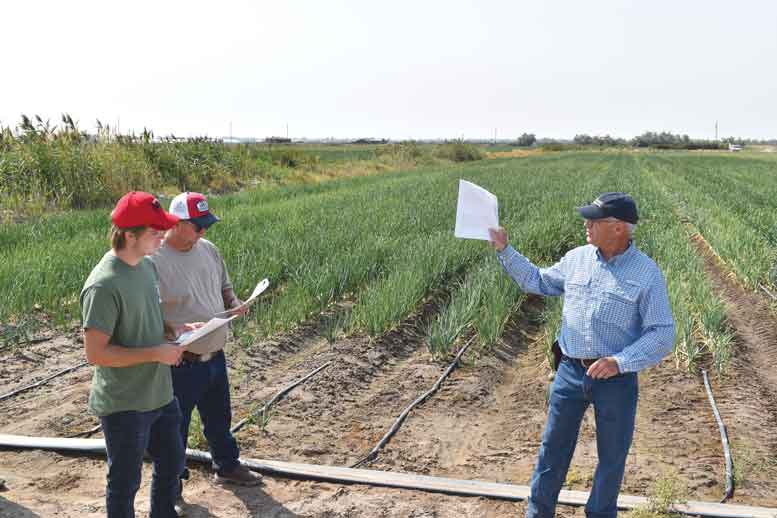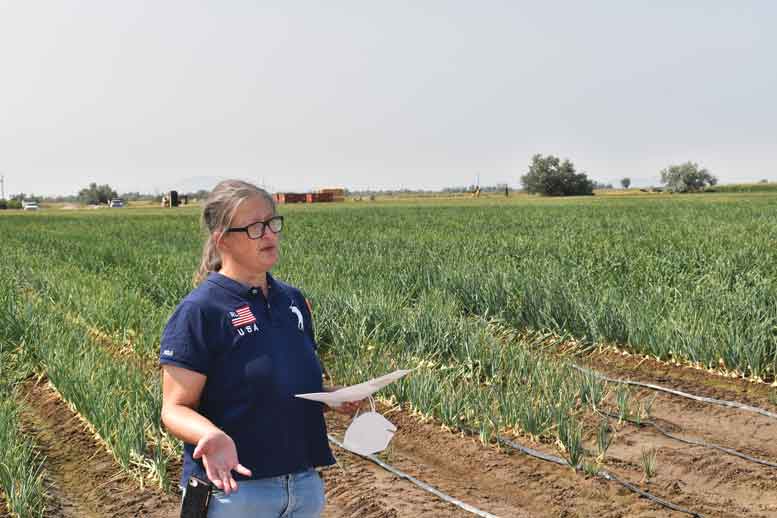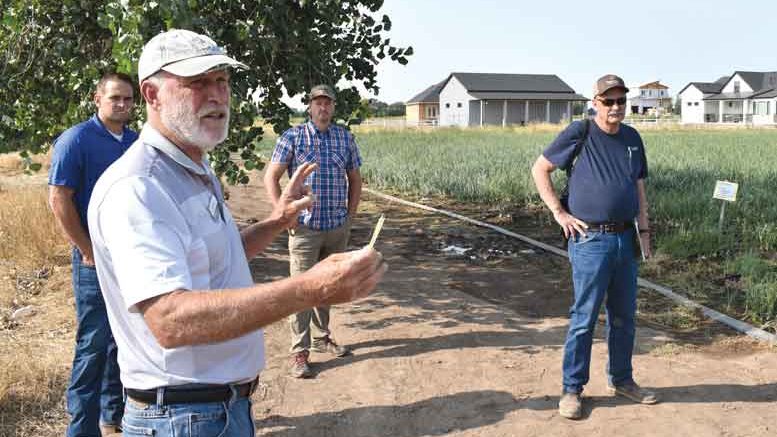|
Click to listen to this article
|
Story and photos by Dave Alexander, Publisher
Utah Onion Association Summer Tour
From a new onion shed to new research trials, Utah State University (USU) Extension showcased it at the Utah Onion Association Summer Tour on Aug. 10. Organized by Dan Drost, vegetable specialist at USU, the tour gave attendees a chance to see Extension trials and hear from researchers.
The day started with a tour of the new onion shed at Bennett Farms in West Weber, Utah, owned by Bennett Gibson. Gibson also runs a produce stand at the new facility that sells to locals. The farm grows 350 acres of onions, along with alfalfa, tomatoes, watermelon and sweet corn. The new shed will eventually have packing equipment and temperature and humidity control equipment from Industrial Ventilation.
From there, attendees went to the field to view onions and hear research conclusions.

Bulb Uniformity
Drost is working with USU undergraduate Crystal Fowler on a project comparing primed onion seed versus raw onion seed to see how seedling emergence variability impacts plant growth and development and eventually bulb size uniformity.
Drost and Fowler found that primed seeds emerged over a 22-day window and the raw seeds over a 20-day window. Many factors can affect emergence including seed, seed size, soil conditions, moisture and temperature. Their goal is to identify where variability starts so that they can make recommendations on how to improve uniformity.

Drip Irrigation
Niel Allen, irrigation specialist at USU, has been studying drip irrigation and its effect on yield. Due to friction loss in the tube, a pressure difference as small as 2 to 3 psi on a drip system could result in a 20 percent difference in water from the high to the low spots in a field.
“Calculate how much water you need and then add at least 10 percent,” he suggested. “With drip, half of your field is going to be under irrigated and half will be over irrigated.”
To help monitor this difference, Allen recommends a free app that is available on Google Play and Apple’s App Store. OneSoil (www.onesoil.ai) uses satellite data to provide Normalized Difference Vegetation Index (NDVI) maps of growers’ fields. The maps show irrigation problem spots and can also be used to make decisions on fertilization and weed control. Updated every three to five days, the app also allows users to make notes and manually change field borders.

Seed Spacing
Drost has also been working on an onion density trial for the last three years, with the goal to develop seed spacing recommendations for Utah. Currently, growers in Utah are using 3.5- to 4-inch spacing, but Drost is testing down to 2 inches.
If all goes well, by the annual Utah Onion Meeting in February, Drost will have spacing recommendations for Utah producers looking to sell into specific size markets.


